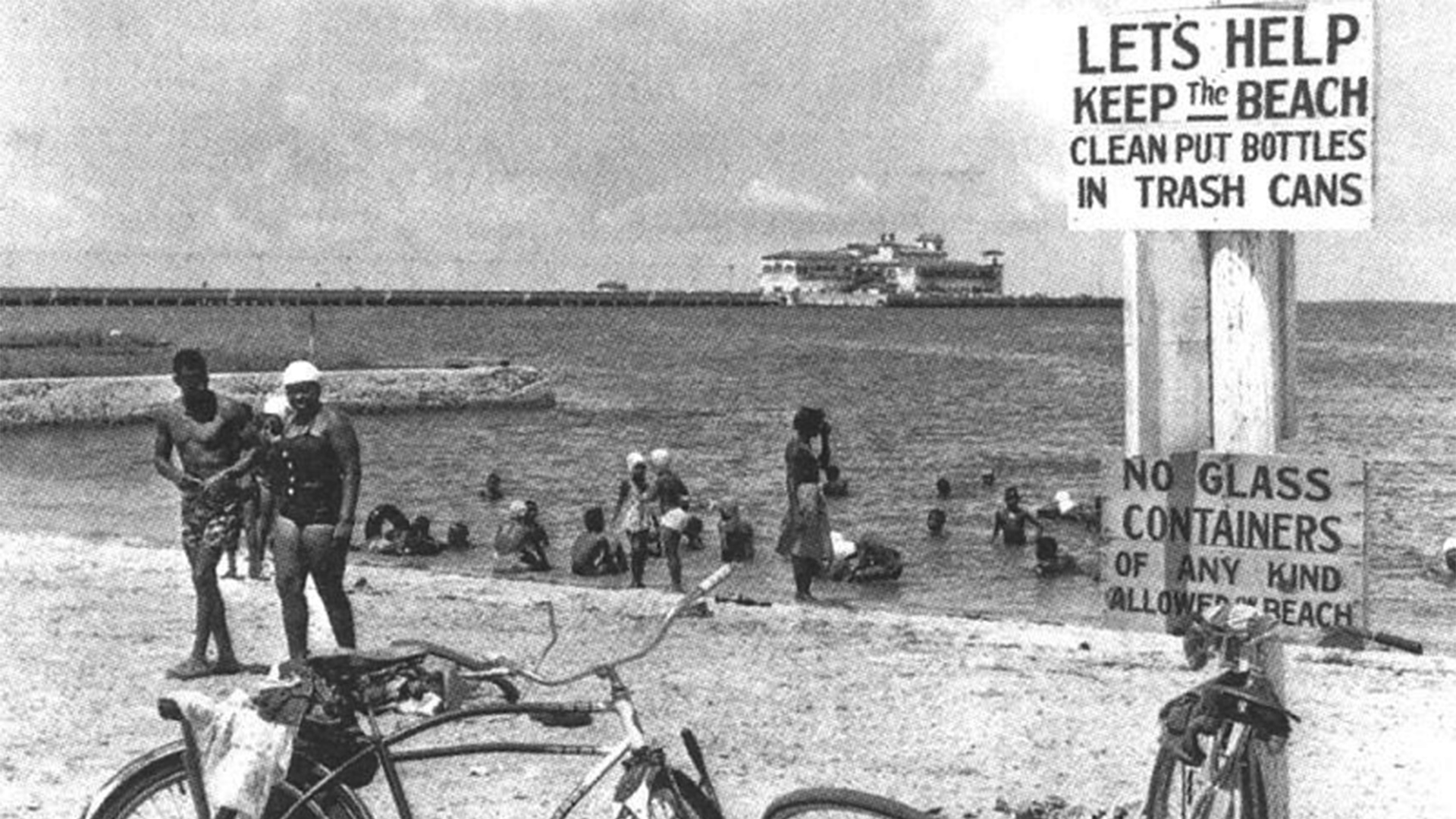Banned at Beaches

Image Source: City of St. Petersburg
Image Source: City of St. Petersburg
From St Pete’s early years through the 1950s, while the city’s white residents and visitors would use the beaches along the bay for recreation, black citizens were not permitted. They were forced to use the “South Mole,” a dingy strip of waterfront on what is now Demen’s Landing.
But the 1954 Brown vs. Board of Ed ruling that banned segregated schools inspired new action. Members of the prominent black Civic Coordinating Committee attempted and petitioned to access the city’s popular municipal Spa Beach and Pool (at the current site of the new St Pete Pier) in August 1955, but were denied. This attempt inspired angry white residents to form the St. Petersburg White Citizens Council, who fought to resist the integration of restaurants and businesses downtown. The denial of access to Spa Beach Pool led the CCC to file a lawsuit which, after a series of appeals, was affirmed their right to use the beach in a ruling made official in April 1957. But it wasn’t until over a year later that the ruling was tested.
In June 1958, by eight black teens and college students, who bought tickets and went for a swim. The non-incident later became a major controversy when city manager Ross Windom completely shut down the beach for three days. The day after reopening, a young black man named David Isom paid admission and swam for an hour. Windom closed Spa Beach down again, and St. Pete’s city council voted to keep it closed for the remainder of the summer rather than integrating the beach. A day after a quiet reopening in early September, a black teenage girl swam at the beach, leading Windom to argue that “we can not escape from the reality that long established custom provides for separation of the races in recreational facilities.”
After another swim-in days later, City Council voted to close Spa Beach indefinitely. Then, after a nearly-approved hurried plan to potentially replace Spa Beach with an auditorium was abandoned, and Windom abruptly announced his resignation and City Council reluctantly reopen Spa Beach and Pool, which remained open from that point on.
See the story told by USF’s Digital Journalism & Design program:
